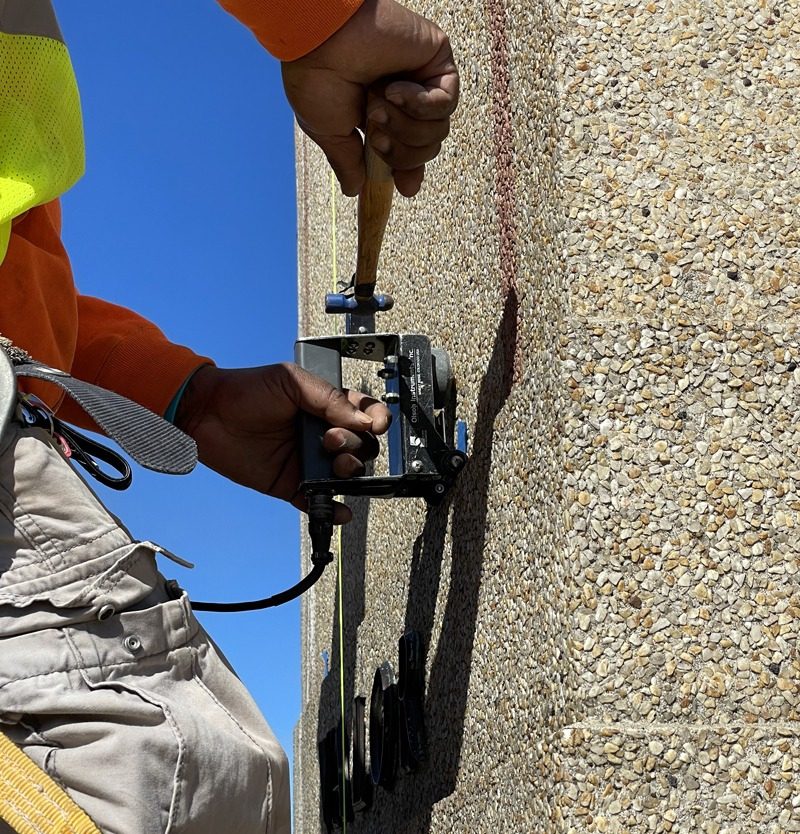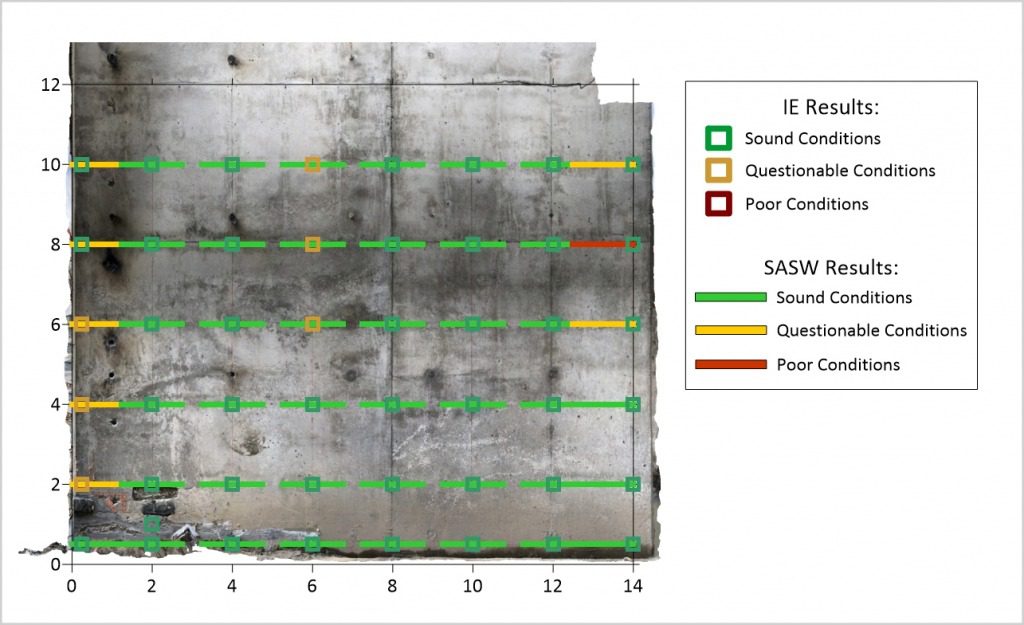Impact Echo
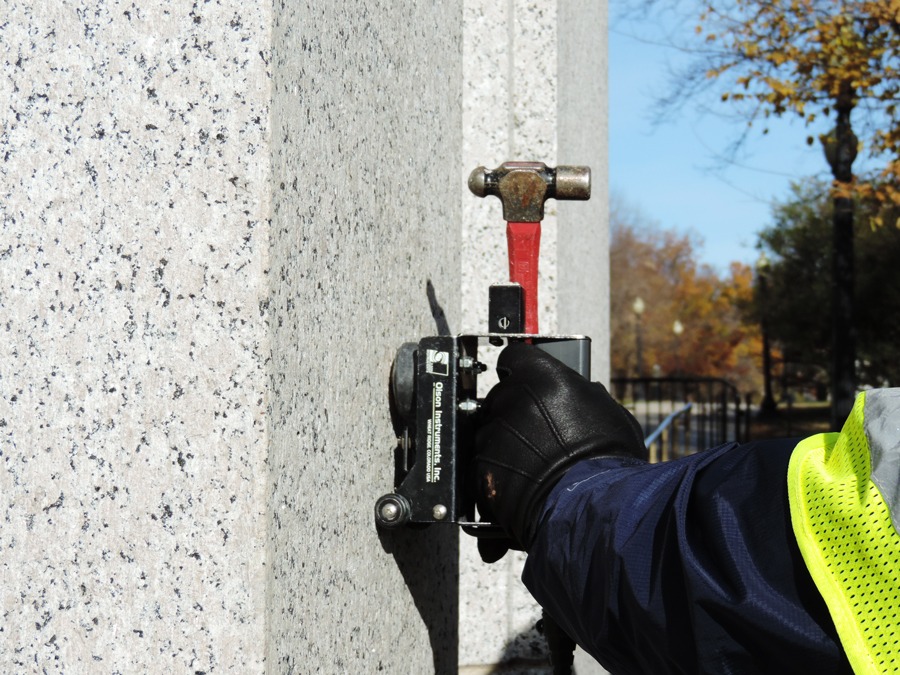
Impact Echo
The Impact Echo (IE) method is used for rapid flaw detection and thickness evaluation of concrete and masonry structural materials.
- Applicable for parallel to subparallel flaws from the surface in plate-like objects such as slabs, walls, columns, mat foundations, beams
- One-sided testing
- Flaw location and depth
- Thickness profiling without the need to drill, core or excavate
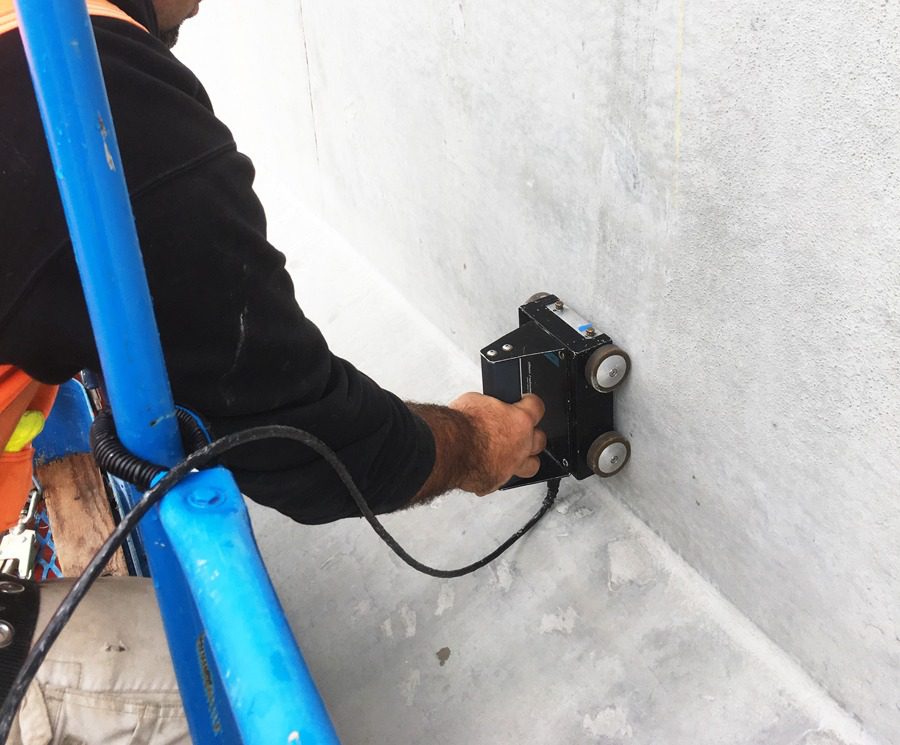
Impact Echo Scanning
A variation of the impact echo principle is the Impact Echo Scanning (IES) method.
- Patented technology of a rolling transducer and automated impactor for near-continuous IE testing
- Fast-acquiring IE testing (1000 points/hour)
- Best for high resolution imaging of large areas for internal concrete conditions
- Example applications: slab thickness profiling and flaw detection, pavement testing, location of ungrouted sections of post-tensioning ducts
- Read a paper on the IES, as applied to PT duct void location
Applicable on:
- Floors
- Beams
- Runways
- Tunnels
- Dams
- Columns
- Walls
- Pavements
- Slabs up to 24 Inches (60 Centimeters) Thick
Test for:
- Thickness and Internal Cracks
- Voids
- Honeycomb
- Delaminations
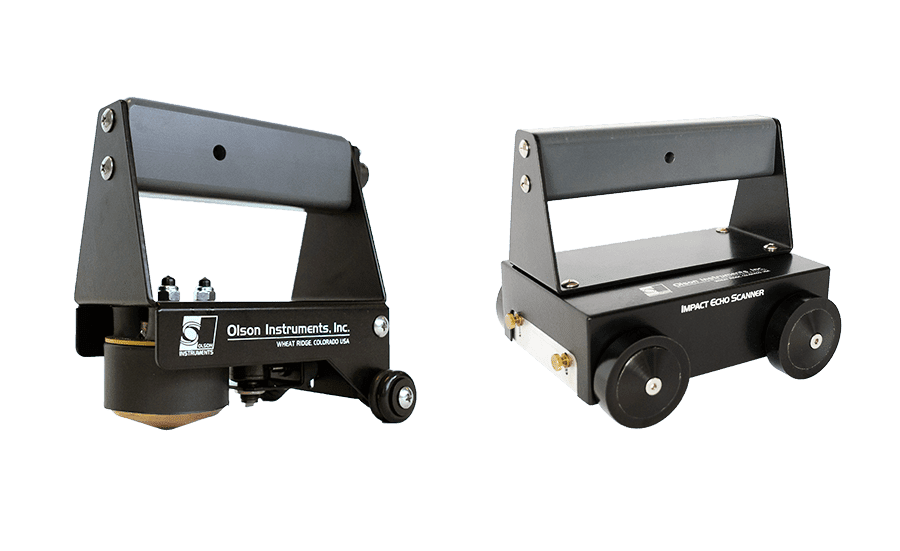
The IE & IES Test Systems
The Impact Echo (IE) system is designed to determine the condition and thickness of concrete, wood, stone, and masonry structural members when voids, honeycomb, and/or cracks are suspected.
- High Data Acquisition
- Thousands of tests can be performed per hour when “imaging” of internal concrete conditions is required
- Convenience
- Only one side of the structure needs to be accessible for testing
- Rapid Testing
- Rapid flaw detection and thickness evaluation
- Testing Specificity
- The IE method provides information on the depth of a flaw or defect, in addition to mapping its lateral location and extent
- Variety of Materials
- This system can be used on concrete, stone, and masonry materials
Relevant Case Studies
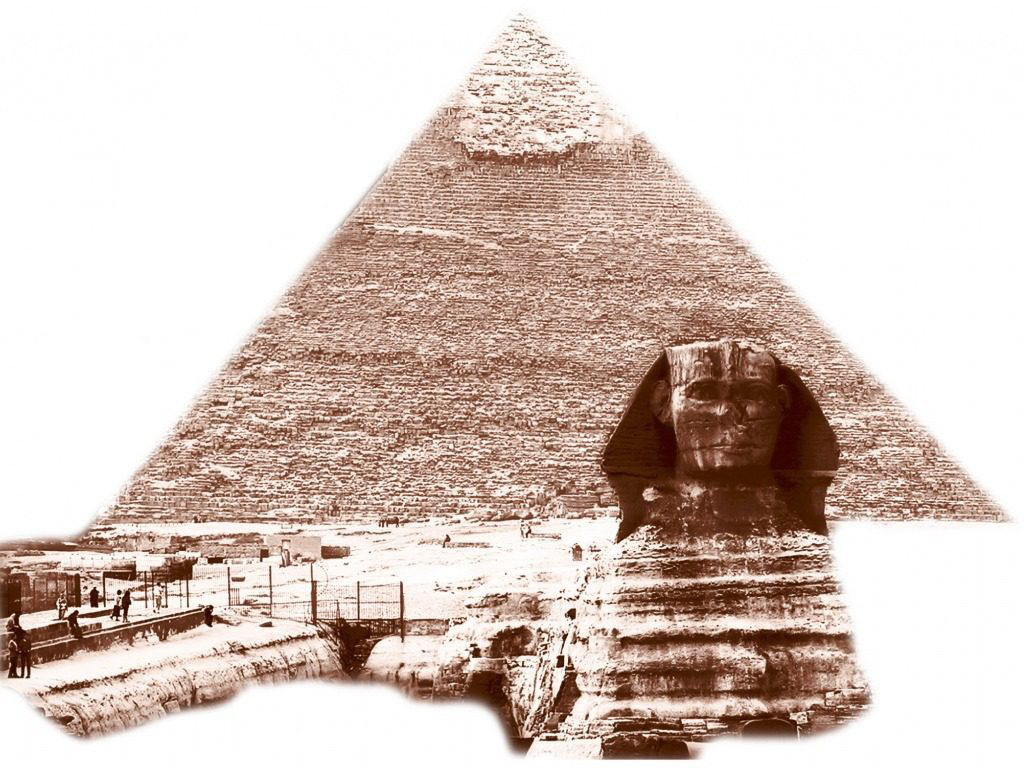
Egyptian Pyramid Exploration
NDT Case Study

Lincoln & Jefferson Memorials
NDT Case Study

Dam Spillway Evaluation
NDT Case Study
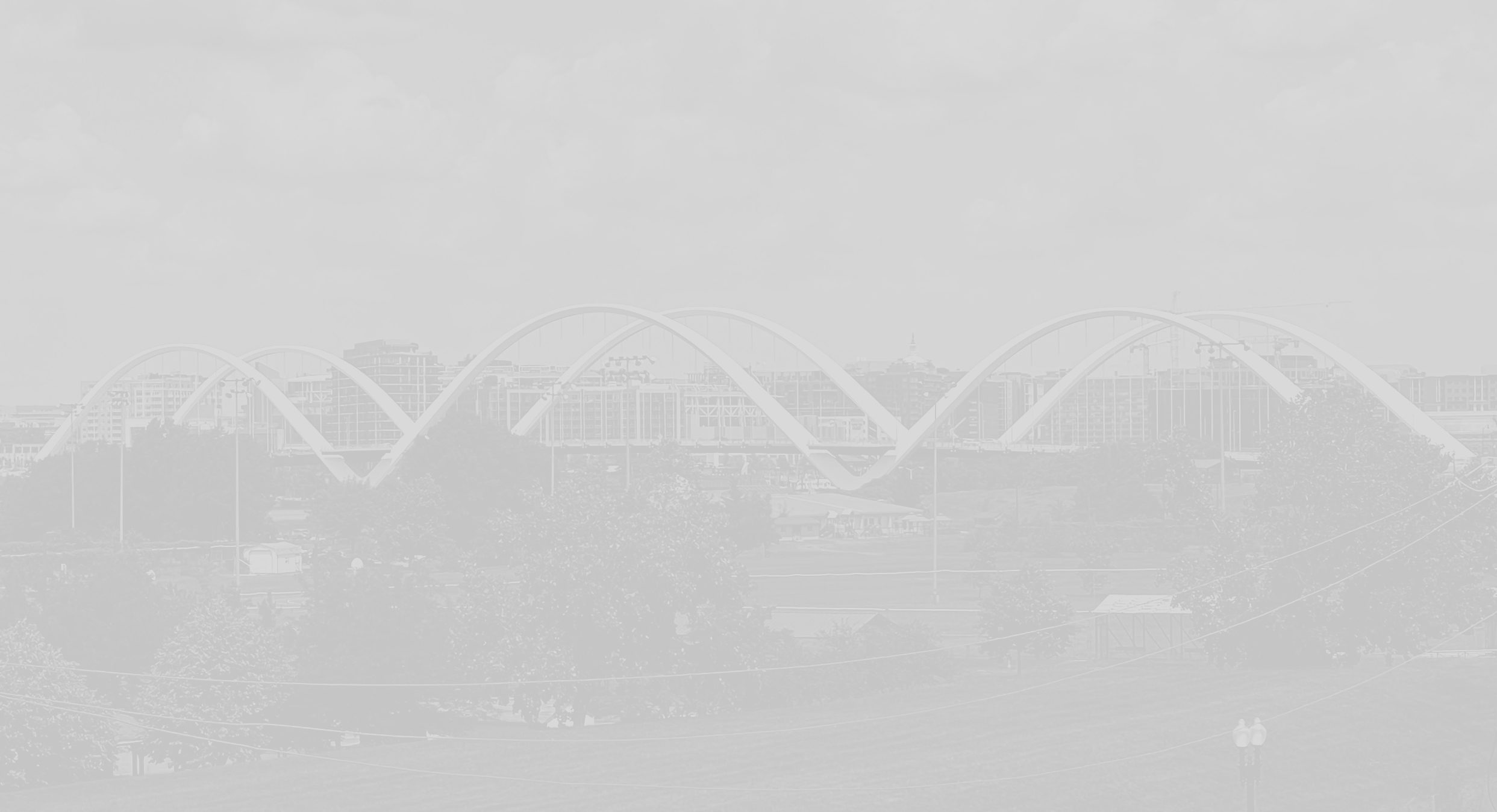
Image Gallery

All Methods


